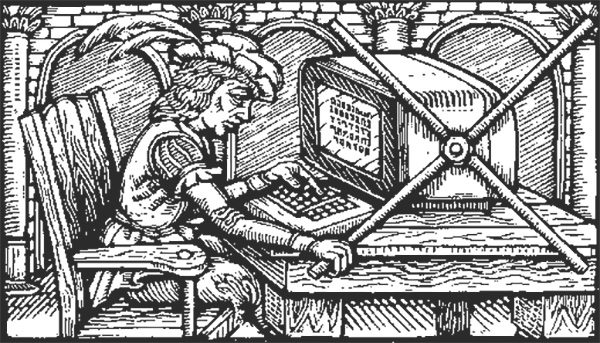
I’ve spent the last couple of days working on a magnum opus job application for a position at a software company you may have heard of. After submitting it this morning, I thought all that effort would be wasted if it were used on just one prospective employer. So I’ve decided to post the job application here on Global Nerdy, with any information about the company and role removed.
Feel free to share this with your friends and spread it far and wide. If you think that you or your organization would benefit from employing the sort of person who’d put in the effort to create this kind of work, feel free to contact me at joey@joeydevilla.com!

My name is Joey deVilla, and I want to be [Company X]’s [job title]. I’m a technically-minded person with a history of communicating and collaborating with developers, I’ve designed and documented desktop, web, and mobile software, and I have experience managing projects that delivered both software and services.
Contents
This is a long document written in response to [the online questionnaire] so I’ve provided this table of contents to make it easier to navigate.
- Why should we consider you for this role? Remember to explain why you would be suited for managing our developer platform rather than our end-user-facing product.
- Give us links to sites that showcase the work you’ve done (such as LinkedIn, GitHub, and so on). Please provide at least one link for a product that you’ve built or helped build that is currently live on the internet.
- Choose a project or product that you helped ship and describe the process from ground zero to finished, shipped product. Include any wireframes, sketches, mocks, screenshots, and narrative to effectively describe your process deciding what to build through actually building (or helping build) it.
- In your opinion, what’s the difference between managing a product geared towards developers and one designed for end users?
- From the list provided, pick the 5 things that excite you most, and the 5 that excite you least. The purpose of this question is mostly to see what your interests and experience are, so don’t let how important you think they are influence your choice.
- And finally…
TL;DR
I would be a great fit for [Company X]’s [job title] role. As a developer, I understand the work, the joys, and the frustrations of building applications. As a technology evangelist, I know how to talk to (and more importantly, listen to) developers and technology decision-makers, and help them understand and make the best use of the developer tools and platforms that I’m evangelizing. These two roles, which I’ve had for most of my career, make me particularly suited to managing [Company X]’s developer platform.
I enjoy making things, and I enjoy helping makers make things. I want to take the next logical step: making things that help makers make things. The [job title] role sounds like a dream opportunity, and one where I could serve [Company X] and the developers that build on it well.
How technical am I? Well, in just the past two weeks…
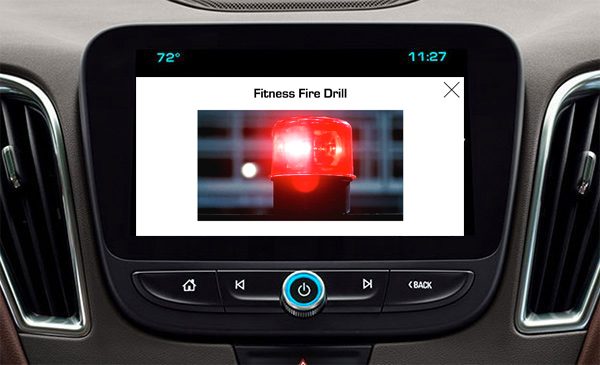
I won the “Judges’ Fetish” prize at GM’s Makers Hustle Harder hackathon at Tampa Hackerspace. GM is holding hackathons in three cities this year to promote their new Next Generation Infotainment (NGI) API for their in-car dashboard consoles. The API gives developers unprecedented access to nearly 400 data points (speed, door status, fuel level, lateral acceleration, and so much more), the audio playback system, and navigation. Developers write apps for the platform using the HTML5/CSS/JavaScript trio and the NGI SDK, which includes an emulator. At the hackathon, developers had the chance to install their apps on actual cars’ consoles to try out their apps in real life.
I contributed to one serious app (WeatherEye, which takes the car’s current speed and heading and displays the weather conditions 10 miles ahead) and put together a not-so-serious serious app (Shotgun, which determines who of a number of passengers gets to ride shotgun), but my winning app was one I threw together at the last minute: Fitness Fire Drill. It referees the car game classically known as “Chinese Fire Drill”. With all passengers in the car and all doors closed, the game begins when someone presses the start button. Players must exit the car and run around it once, return to their original seat, and close the door. When the last door is closed, the game ends, and the app reports the team’s time.
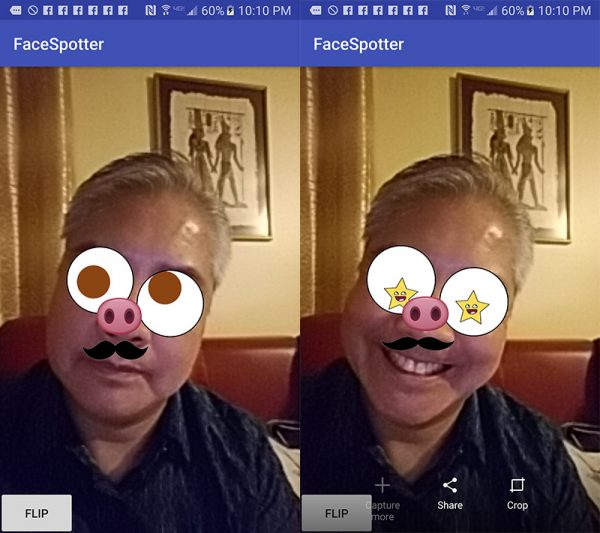
I wrote an Android app for an upcoming article at a well-trafficked mobile developer site on face detection and adding cartoon features to people’s faces like Snapchat does. The code lives on my GitHub, under the name FaceSpotter.
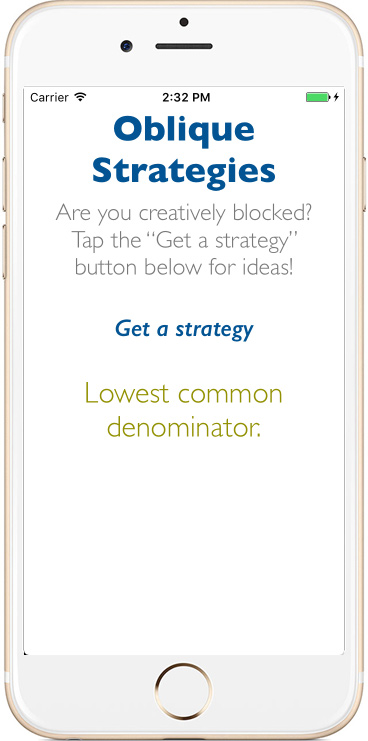
I taught beginners how to write “fortune cookie”-style apps in Swift for the iPhone and iPad at Tampa iOS Meetup, a regular gathering of new iOS developers that I run. I followed it up with an article that covers the material in the meetup and walks the reader through the process of building a “fortune cookie’ app called Oblique Strategies, an app that suggests randomly-selected ways to break past a creative block.

I have continued with my work writing a tutorial for the Smart Cosmos RFID/real-world object virtualization API, using code examples in Ruby and PHP and Postman as a container.
My recent work experience
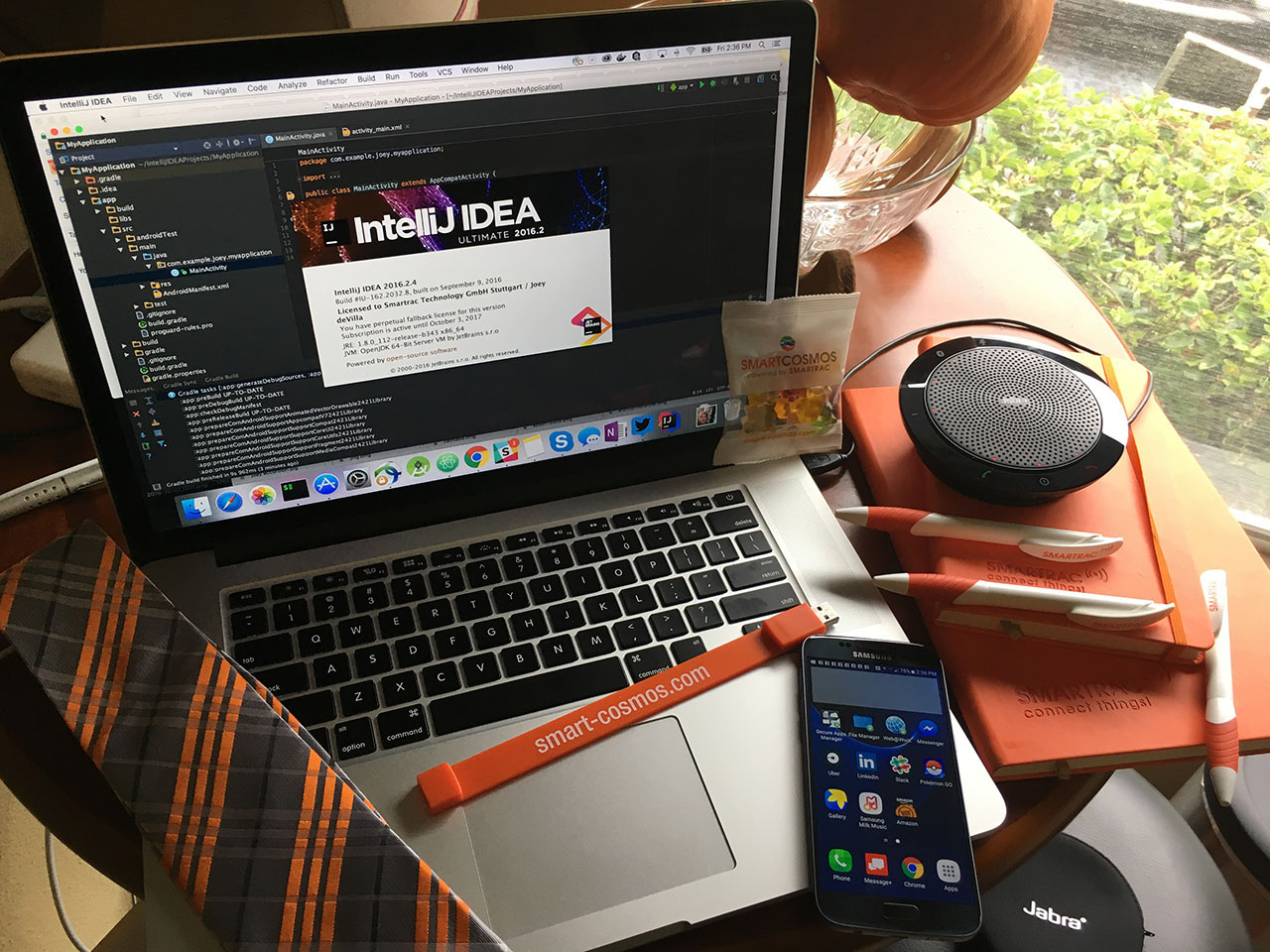
In my most recent role as Smartrac’s Technology Evangelist, I wrote API tutorials and scripted API demo videos, met with major clients and partner organizations to discuss their requirements, and performed demonstrations of the company’s integrated RFID hardware/cloud software platform at the 2017 National Retail Federation “Big Show” conference in New York.
A video that I wrote, produced, narrated, and edited on behalf of GSG for IBM’s NICO program.
At GSG, I worked closely with IBM’s NICO (Network Infrastructure Cost Optimization) team to build NICO Quick Assess, a custom online questionnaire (they didn’t want to use “canned” solutions such as SurveyMonkey for security reasons) that served as an initial enterprise telecom audit. It was designed for an audience of finance and technology decision-makers at enterprises who spent at least $5 million/year on telecommunications and networking. Working with telecom auditors and IBM executives, I designed the questionnaire and oversaw its implementation.
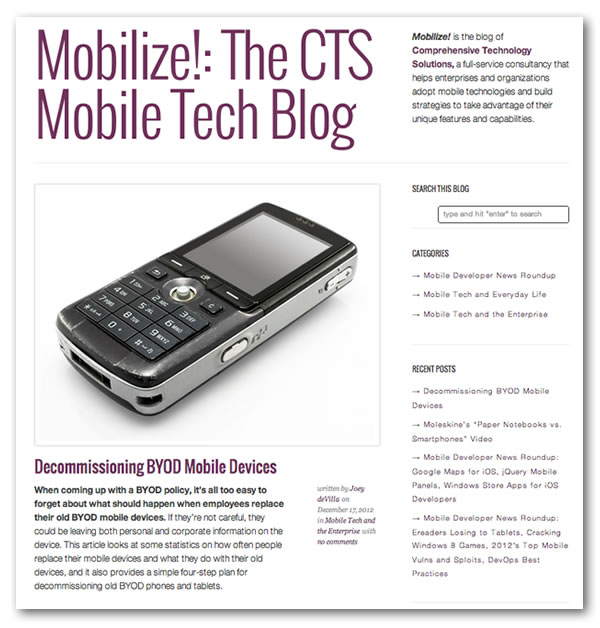
As the CTO, I oversaw the development of web-based and mobile software at Comprehensive Technology Solutions, including a web app that helps medium- to large-sized enterprises move their employees from corporate-liable mobile devices to indvidual-liable ones, as well as an app that runs diagnostic checks on iOS and Android smartphones.
I have a strong grasp of API and data fundamentals

I’ve been on both sides of the API divide: a developer using other people’s APIs, and a developer evangelist who’s helped developers use my company’s APIs.
I’ve spent long days and nights trying to get an application to work with an API only to discover that it was my misunderstanding of the API that was causing me all that grief, and I’ve seen the “a-ha!” moment of realization on developers’ faces after explaining a poorly-documented API to them. I’ve even helped developers come up with solutions to their problems and brainstorm new, interesting, and unusual uses for an API.
I just won a prize at a hackathon where we had to write apps using GM’s Next Generation Infotainment API, which provides access to nearly 400 data points in GM’s newest cars, and am currently working on an article that showcases the Android Mobile Vision APIs, namely the text recognition and face recognition APIs. I worked at Microsoft just long enough to have some experience with SOAP APIs and know why you should avoid them whenever possible.
I’m comfortable with a number of different flavors of SQL, from Microsoft’s Transact-SQL (used in SQL Server) to PostgreSQL to MySQL to SQLite. I’ve played with MongoDB, CouchDB, and Azure storage. I’ve also written scripts to pull data from and write data to Excel files, .CSV files, tab-delimited files, Dbase exports, well-formatted XML and JSON, poorly-formatted XML and JSON, and some of the most messed-up text files you’ve ever seen.
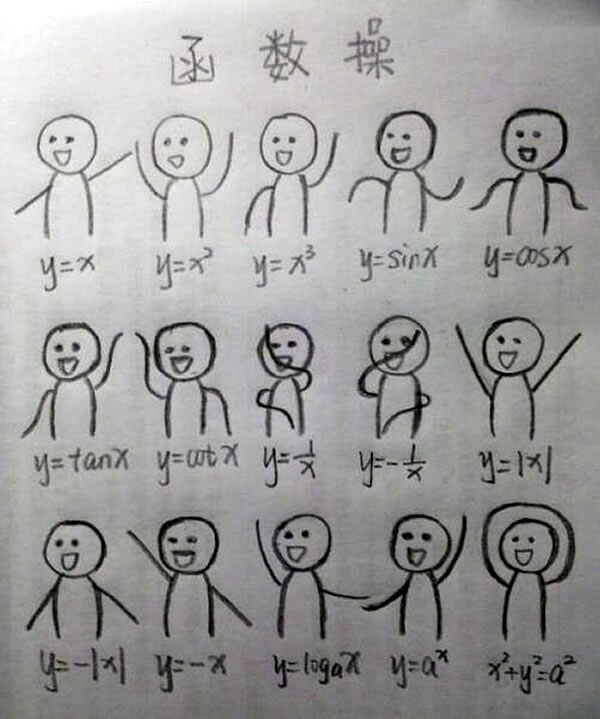
Before I switched to computer science, I was an electrical engineering student, and had to take all the requisite math and stats courses, so I know my median from my mean from my mode, and I know that a “standard deviation” doesn’t mean getting a piercing somewhere other than the ear. I’m comfortable with analytics of all sorts, from web analytics tools to see how well a piece online is performing, to application analytics tools to see how well an app is (or isn’t) performing.
In the end, this role is all about the API, and ensuring that developers can quickly and easily use it. While [Company X]’s goal is to get more applications to make use of [Company X] more often, it’s important to remember the developers’ goal, which is to ensure that their application works and that their users are getting what they need from it — to them, [Company X] integration is just a means to that end. If the [Company X] integration experience isn’t clear, or simple, or efficient, or unobtrusive, developers will simply avoid [Company X], and that’s not what we want.
I love talking to developers
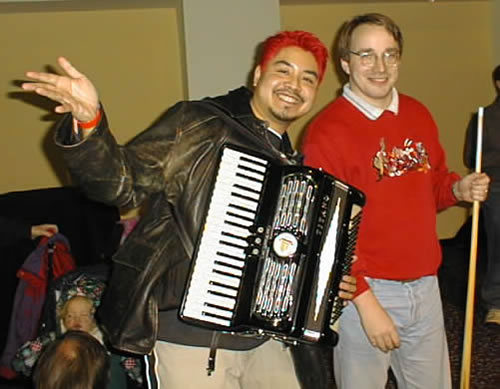
Meeting Linus Torvalds at LinuxWorld Expo NYC.
Talking with developers, writing for developers, making podcasts and video for developers, and building developer communities is what I do, and this would be a fundamental part of what I would do as [Company X]’s [role].
Ever since that LinuxWorld Expo when I jumped in front of a news camera with my accordion and parleyed it into an interview where I talked about my company and its P2P platform, I’ve held developer evangelism roles at a number of prominent places, including Shopify, Microsoft, and Tucows.
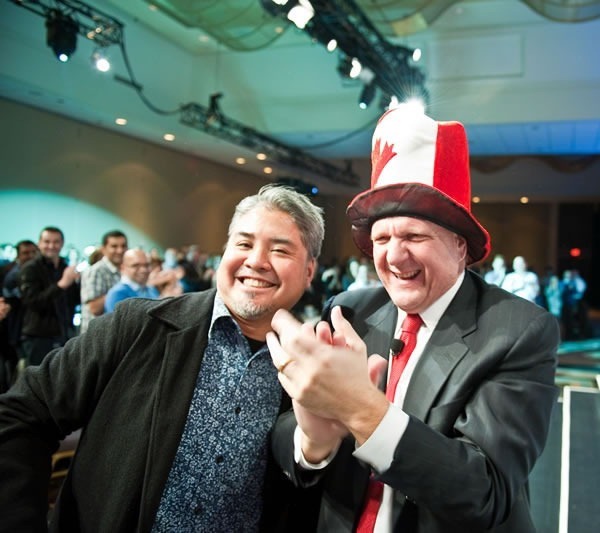
Me and Steve Ballmer at the Canadian Windows 7 launch in Toronto.
I was hired by Microsoft not just to be an evangelist, but to be a “square peg in a round hole“. I came there from the world of open source and found myself talking to developers who were deep in Windows culture. I specialized in presenting topics, technologies, and practices that were well-covered in the open source, but less so in the land of Windows and .NET, which at the time included MVC web frameworks, PHP, JavaScript, mobile development, and distributed version control.
I helped build bridges between the open source and Windows worlds by trying seemingly crazy things such as speaking at open source conferences, getting Microsoft to sponsor an Android developer conference (they were short money, and for some reason, they weren’t able to get sponsorship from Google)…
(Wow, is that video thumbnail terrible.)
…and organizing “bridge” events like “Make Web Not War”:
I was Microsoft Canada’s most prolific blogger, having written nearly 750 articles between January 2008 and April 2011 on Microsoft’s “Canadian Developer Connection” blog. I was also editor of the Canadian edition of the MSDN Flash newsletter, which was sent to 48,000 Canadian subscribers every two weeks. My work promoting mobile development earned me a spot on the Windows Phone 7 Champion team, a group of Microsoft employees hand-picked to promote the then-new Windows Phone 7 platform. I also oversaw Windows Phone 7 beta testing program for Canadian “breadth” developers, which included providing them with advance access to phones, developer support and documentation, and even organizing showcase events like this one:
At Shopify, I helped put together the Shopify Fund, a $1 million fund that helped sponsor developers who wanted to work full-time on building high-demand apps for the Shopify platform:
I also represented Shopify on the 2011 BarCamp Tour, where I talked to developers and entrepreneurs at BarCamps in eight cities all over the U.S., and wrote articles for the Shopify blog.
Later, I was a technical reviewer for the Packt book Shopify Application Development.
I’ve also done video aimed at developer audiences…
I’ve even done video for developers of the junior variety:
I’ve expanded my audience beyond developers to talk to business decision-makers, such as with this webcast I did for Enterprise Mobile, a subsidiary of Honeywell:
When I lived in Toronto, I was a steward of http://barcamp.org/w/page/402370/DemoCamp a monthly “show and tell” for local developers…
…an active member of HacklabTO, Toronto’s first hackerspace…
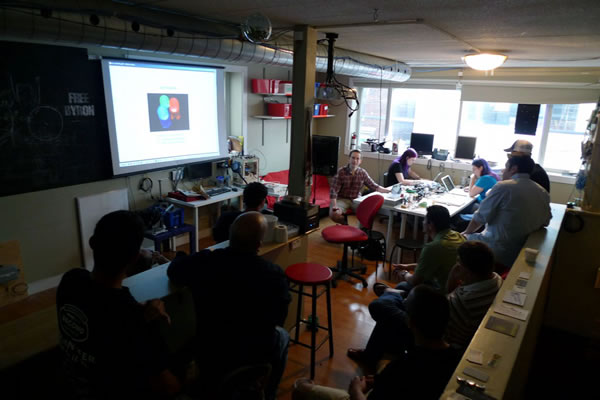
…and an organizer of regular developer events in Toronto, including a monthly dim sum lunch gathering in Chinatown:
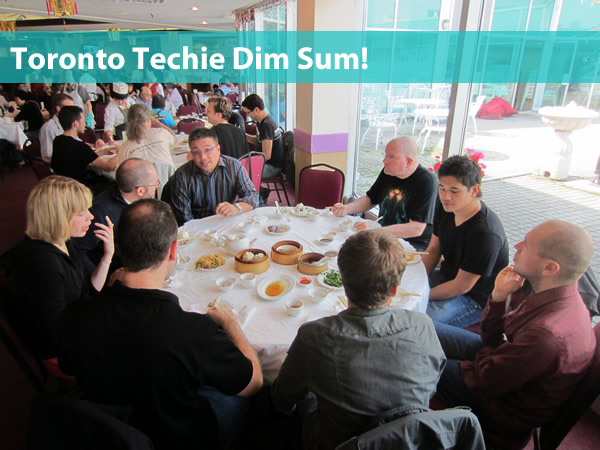
Since moving to Tampa, I’ve been giving presentations at BarCamp Tampa Bay and Ignite Tampa…
…and participating at local makerspaces like The Hive and Tampa Hackerspace.
I love setting my own course, and doing so efficiently
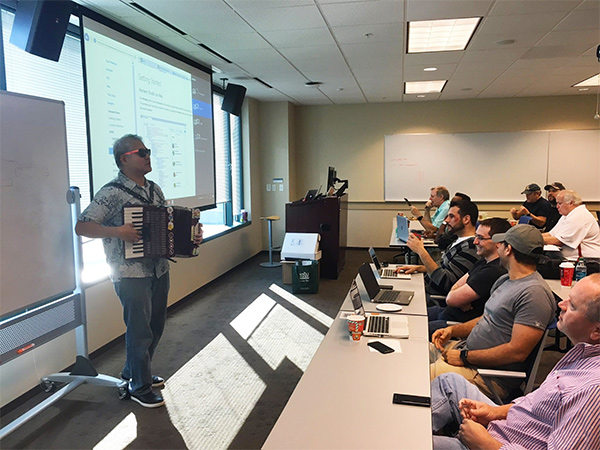
I’m a firm believer in gaining a clear understanding of the “what” and “why” of “commander’s intent” — the desired end state of a group of organization — and then running with it and coming up with the “hows” that help the group reach that desired end state. I take great care to communicate my efforts within the organization in order to make clear how I’m helping to achieve the desired end state.
I’ve spent most of my career working either at startups, and when I’ve worked in larger organizations, I’ve either been part of or spearheaded “intrapreneurial” efforts within those organizations. I know that in these situations, your actions have to make the most of existing resources, or as I like to say, “make a buck out of ten cents”. I work to ensure that any work product I create can be reused in a number of scenarios and media, and that my efforts scale.
As a startup, [Company X] has to “punch above its weight”; there just isn’t room for wasted effort. It needs people who are self-starters that can work with a distributed team and make smart judgement calls with a minimum of hand-holding. That’s the sort of work I’ve been doing for the past decade, and the work I’d love to continue doing with [Company X].
My LinkedIn account is at linkedin.com/in/joeydevilla.
My GitHub account is located at github.com/accordionguy. Among the projects hosted there are:
- inPulse Magic 8-Ball: repository and site. This is a tutorial for programming a simple app for the inPulse Smartwatch, the predecessor of the Pebble Smartwatch.
- Aspirations Winery’s Wine Crush: repository and site. This is the code for my app in the App Store, a “Candy Crush”-style game written for my friends’ winery.
- Fitness Fire Drill: One of my submissions for the GM “Makers Hustle Harder” hackathon. This one won the “Judges’ Fetish” prize.
- FaceSpotter: An in-progress app demonstrating Android’s face detection API.
I’m one of the early Stack Overflow users — number 216 — and my reputation score of 6,462 puts me in the top 6%.
My Twitter account is @AccordionGuy, and I have 10.6K followers.
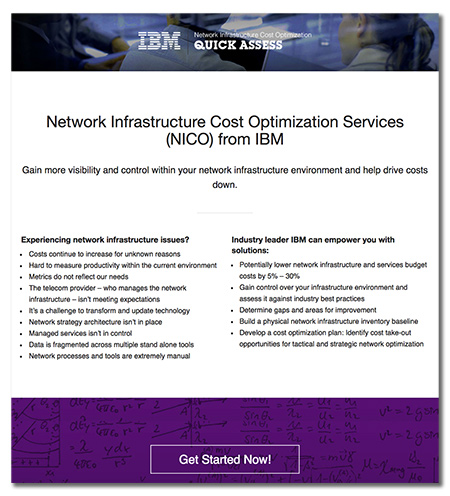
Here’s a live-on-the-internet product that I built: NICO Quick Assess, an enterprise telecom needs assessment survey for IBM’s NICO (Network Infrastructure Cost Optimization), a service aimed at organizations that spend at least $5 million a year on telecom and networking.
Global Nerdy is my technology and software development blog, and it’s been active since the summer of 2006. I’ve published over 3,200 articles in it, and the blog has over 8.6 million pageviews over its lifetime.
The name “Global Nerdy” came from “The Duke of URL”, an application I wrote to demonstrate Tucows’ “Namespinner” API, which provides a list of available domain names based on keywords that you provide it. You can see this API in action when you visit their domain name site, Hover.
Here’s a sampling of articles on Global Nerdy:
- Build your first app for GM’s Next Generation Infotainment (NGI) in-car platform
- “Oblique Strategies” and Tampa iOS Meetup’s February 2017 session
- Just enough React to get you into trouble
- Demonstrating map, filter, and reduce in Swift using food emoji
- How to work with dates and times in Swift 3
- Swift 3 text field magic
- How to build an iOS weather app in Swift
- Simple “Shoot ’em up” game with Sprite Kit
- Better to be roughly right than precisely wrong: Rounding numbers with Swift
- How to fix the common “no sound from AVPlayer/AVAudioPlayer” problem in iOS/Swift programming
- Sprite Kit actions tutorial
- How to execute a block of code after a specified delay
- A first look at Swift’s new access levels
- You can use Swift’s “private” access modifier to limit the reach of overrides and extensions, but not monkeypatches
- Updating RayWenderlich.com’s “AFNetworking Crash Course” for iOS 6
- Magic 8-ball tutorial in Objective-C
- Simple weather app in Objective-C
- A Step Forward (or: Objective-C Doesn’t Need Forward Declarations Anymore)
- How GPS works, and how to make the most of it
The projects that I’ve done with employers are covered under non-disclosure agreements, so I’ve chosen to discuss one that I did on my own: Aspirations Winery’s Wine Crush, a “Candy Crush”-style game with Aspirations Winery’s branding.
Wine Crush is an iPhone/iPad app that I posted to the App Store in July 2016. It’s available for free, so if you want to install it on an iOS device, use this App Store link. Alternately, you can watch this video, which provides a quick overview of the app:
I approached Bill and Robin Linville, Aspirations Winery’s owners, with a proposal to create an app for them at no cost to them other than the occasional free bottle of their wine. They would get something most small wineries don’t have — their own branded promotional app — and in return, I could add an app to my portfolio.
Building on a game engine
The goal of the app was to promote Aspirations Winery with a simple, addictive, enjoyable mobile game. The game didn’t have to be original; this was advertising that just happened to be a game rather than a game that just happened to contain advertising.
With this goal in mind, I decided that rather than build a game from scratch, I would start with an existing game engine, and then build upon it. I decided to base the game on “Cookie Crunch”, a basic “Candy Crush” game engine presented in a series of tutorial articles on the mobile developer site RayWenderlich.com. Code posted on that site is freely available for anyone to use in their own projects, and using their engine as a basis for my app would easily save dozens of hours of development time.
If you follow the steps in the tutorial article series, you will end with a basic “Candy Crush” game that looks like this:
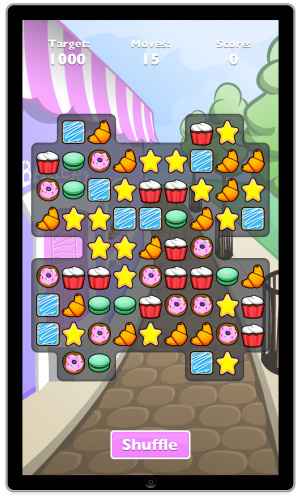
The game has a single level; once you clear it, you play the same level again. The code has some “scaffolding” for adding different levels to the game, but implementing them was left as an exercise for the reader.
My plan was to take the basic game from the tutorial and expand upon it to include the following:
- A title screen, which would present the following options to the user:
- Start a new game.
- View instructions on how to play the game. This would require adding a new “screen” to the game, which would display the instructions.
- Visit Aspirations Winery’s site. This would be done by opening Safari and pointing it at Aspirations’ site.
- Multiple levels. In the basic game, once the user cleared a level, s/he would be presented with the same level again. The finished game should feature a few dozen different levels, each one slightly more difficult than the last. The background image should be different for each level.
- Gameplay features:
- A hint button. When I showed the basic game to Aspirations’ owners, they requested a “hint” button similar to the ones that appear in “Candy Crush”-style games. When a player is stuck and can’t see any possible moves, s/he could press the button and be shown one of those moves.
- “No possible moves” detection. There are times when no moves will be available to the player, especially on the more difficult levels. The game announce this to the player. If the player has at least two moves remaining, the game should tell him/her to use the “shuffle” button. If the player has one or fewer moves left, the game should end.
- A target score display. This should display the number of points remaining for the player to reach the next level.
- A “quit” button. This should cancel the game and return the player to the main screen.
- Branding: The basic game features cookie-themed graphics and sounds. The final game should feature wine-themed graphics and sounds, as well as Aspirations Winery’s branding.
Phase 1: Language upgrade and some new graphics
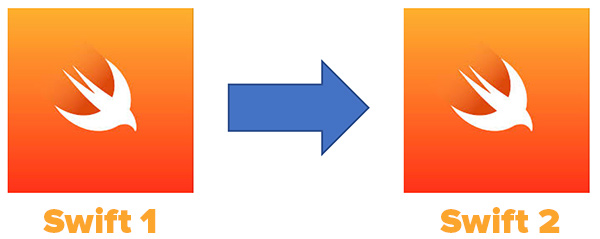
At the time I started working on the app, the game engine in the tutorial was written in Swift 1, and the current version of Swift at the time was 2.0. Version 2.0 introduced significant changes to Swift’s syntax, particularly with error handling. I decided that my first step should be to port the game engine code from Swift 2, partly as an exercise in learning the new syntax, and partly in order to avoid having to pay off technical debt at a later date.
Xcode provided a Swift 1 to Swift 2 automated migration tool, but some of the changes in syntax were large enough that an automated tool couldn’t perform the migration. I first used the automated tool to migrate the code, which still left about two dozen parts of the code that needed to be migrated manually. I marked those parts with // TODO: comments, which makes them very easy to find within Xcode. I then manually migrated them one by one.
The migration process was relatively straightforward; I completed it and tested my changes over two evenings.
With the basic game upgraded to Swift 2.0, it was time to present a basic version to the client. I made some new wine-themed icons and an impressionist background used them to replace the original game’s cookie-themed icons and background. The game now looked like this:
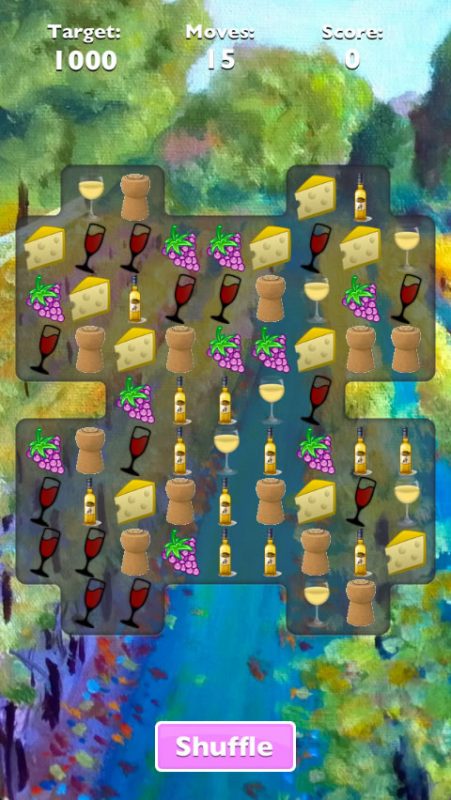
At this point, it was still a single-screen game with just one level, but it was now something that the client could try out on their iOS devices.
Making test versions available to the client
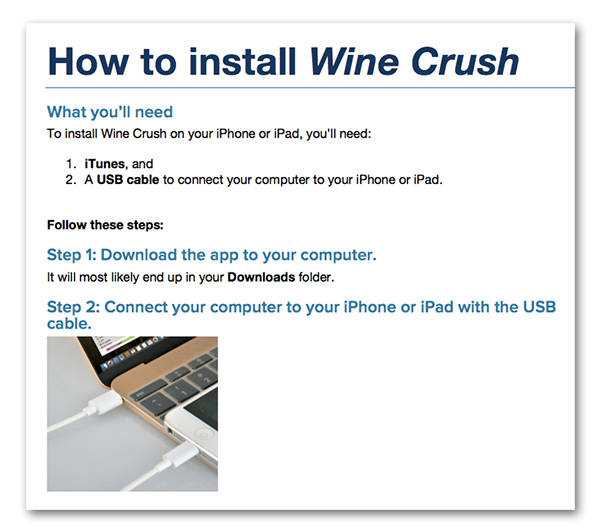
There are only a couple of ways for beta testers to install test versions on their iOS devices. I thought about using the TestFlight beta testing service, but the process at the time was so convoluted and confusing to the client that I opted for the lower-tech method of sending them the application package, and having them use iTunes to install the package. I provided them with a set of easy-to-follow instructions for installing beta test versions, which you can download here.
New graphics

With a test version to play with, the client had a much better idea of what the final product could be like. They provided me with four of their labels, which they wanted to use a backgrounds for the game. We decided that as the player progressed from level to level, the backgrounds would cycle in round-robin fashion:
- For level 1, wine label 1 (Swamp Juice) would be used as the background
- For level 2, wine label 2 (Tropical Paradise)…
- For level 3, wine label 3 (Catchin’ Some Rays)…
- For level 4, wine label 4 (Crashing Waves)…
- For level 5, we’d cycle back to the beginning and use wine label 1 (Swamp Juice) as the background.
They also provided me with some icons to replace the ones I used in the initial version.
![]()
In the basic game, a “crunch” sound is played when the player matches three or more items, which fit with its cookie theme. Since Wine Crush is wine-themed, I replaced that sound effect with the “clink” of a wine glass.
At this point, the game still had a single level, so I simply changed the background graphic to wine label 1 (Swamp Juice), replaced the game icons with the ones that the client provided, and then sent them a new version to try out.
Now comes the hard part
Any changes that I’d made to the basic game engine were superficial or relatively simple, what with changing media and updating programming language syntax. From this point forward, many of the changes I would make would require reverse-engineering the code in order to determine how to add the gameplay features that I wanted to implement.
Before adding any features, I reviewed the existing code, added comments where appropriate, and took some quick notes on what each class did. Here’s a sample:
Click the image to see it at full size.
Adding gameplay features
I decided to add gameplay features starting with what I thought would be the hardest to implement, so I began with changing the game to support multiple levels. This was the first of many times where having done reverse-engineering before making any serious changes to the code paid off. Luckily for me, the game engine was written so that it would support multiple levels, but their implementation was left as an exercise for the reader.
The next task was to implement the hint button. Once again, my initial review and diagramming of the code’s structure made this relatively easy — game state is stored in the Level class, which represents the current state of the game board. It maintains an instance variable called possibleSwaps, which in turn is a set of instances of the Swap class, each of which represents a valid move.
Once I’d determined how to get the set of valid moves, it was a simple matter adding a new method, hint() to the Level class. It returns the first item in possibleSwaps if one existed, or nil if possibleSwaps was empty.
Now that I could identify a valid move, the next step was to find a way to show it to the user without affecting the game state. Once again, having done the initial reverse-engineering step paid off: it was clear to me that the GameScene class, which controlled the visual representation of the game state, was the best place to look. A quick review of GameScene’s methods revealed that it had a method for animating an attempt to make an invalid move: it swaps two game pieces, but then returns them back to their original positions. This animation was perfect for giving the user a hint.
I then had the minimum information required to wire up a hint button. Once I had the hint button working, I added a couple of additional related features:
- A score penalty of 10 points for each use of the hint button
- A boolean to track if the hint button has been used this turn (the score penalty should only count once per turn)
My initial reverse-engineering review also paid off for building a function that detects if the player has no valid moves. Once again, the place to look was the Level class, which has the swapsCount() method, which returns the number of valid moves available to the player. I harnessed this method to create a feature that tells the player that there are no valid moves available and if the player has enough moves remaining, tells the player to use the shuffle button to randomly refill the board.
Committing early, committing often
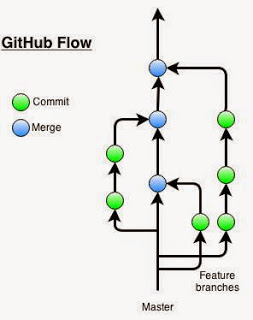
One of the key factors in my successfully finishing the project was consistent, constant use of version control, namely git. This was a particularly experimentation-heavy project, and there were many times where I would end up in a “blind alley” and need to revert back to a previous working version.
I decided to follow the same workflow that the GitHub team uses (see the diagram above), which is based on a set of simple maxims:
- Anything in the master branch is deployable.
- Working on anything new — adding a new feature, making a tweak, or even just refactoring — requires creating a new branch first, and working on that branch.
- Commit to the branch regularly.
- If the change can be confirmed as working properly, merge the branch into master.
Adding the other screens
Once I had all the gameplay features added, it was time to implement the other screens:
- Title
- Instructions
- Aspirations Winery web site
Until this point, the app had only one screen: the game screen. When you launched the app, it went straight to the game. The next step was to restructure the app like so:
Click the image to see it at full size.
The game was self-contained, so making this change was relatively easy. I created a new view controller for the title screen, and made it the view controller that was presented upon app launch. I added a “play game” button to the title screen, and wired it so that pressing it loaded the game view controller. This change necessitated adding code to the game view controller that returns back to the title screen when the game ends or when the player presses the quit button.
The instructions button takes the player to the instructions screen, which is implemented as its own view controller. To simplify its implementation, most of it is taken up by a web view that displays an HTML page embedded within the app. The web view provides a lot of features that I wouldn’t have to implement — support for multiple fonts, static and animated graphics, scrolling — and makes it simple to edit the instructions.
The “visit Aspirations Winery’s site” button was the simplest to implement. It simply launches Safari and points it at aspirationswinery.com.
Fixing bugs and responding to feature requests
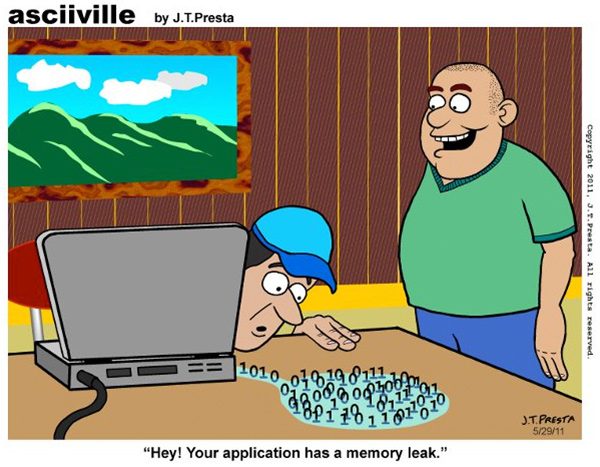
After I added the title screen, I noticed that the longer you played the game, the more it slowed down. That type of behavior usually indicates a memory leak, and after several runs of the app while monitoring its memory usage with the Activity Monitor, I confirmed that the app was leaking memory. It was a byproduct of bouncing back and forth between the title screen and the game screen; every time the player went from the title screen to the game screen, a new game screen object was created. After a handful of game plays, the device’s memory would fill up.
Once I found the cause of the slowdown, I changed way that the app switched between screens. I used some code that I remembered seeing in an iOS programming book that made use of a view controller that transitioned from screen to screen by explicitly loading the next screen into memory and unloading the previous screen.
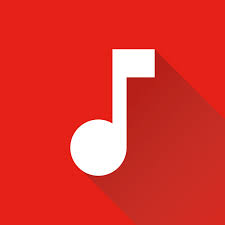
A couple of testers tried listening to podcasts while testing Wine Crush, and found that it wasn’t possible. The app’s sound channels overrode any other app’s sounds, including those running in the background, such as podcasts. They asked me if I could allow other app’s sounds to be heard even when the game was playing.
It took a little research and testing, but within an hour, I found out how to support audio channels from other applications.
Shipping
Six weeks after the start of the project, all the features that I planned to add to the basic app were complete, and my small group of testers couldn’t find any more bugs. Immediately after my final commit to version control, I submitted Wine Crush to the App Store.
The submission process was mostly straightforward. The only complication arose from the fact that the app is all about wine and features wine imagery. I had to specify that the app prominently features alcohol, which meant that it would be age-restricted in some countries and completely unavailable in some others.
The app was approved in less than 48 hours, and on July 7, 2016, it became available in the App Store.

Over a span of ten years, I’ve promoted, demonstrated, documented, and assisted developers with various tools and platforms from a number of organizations: OpenCola, Tucows, Microsoft, Shopify, and Smartrac. In that time, I’ve developed a deep understanding of the specifics and subtleties of products geared towards developers…
They’re tools for hackers*, makers, tinkers, and experimenters
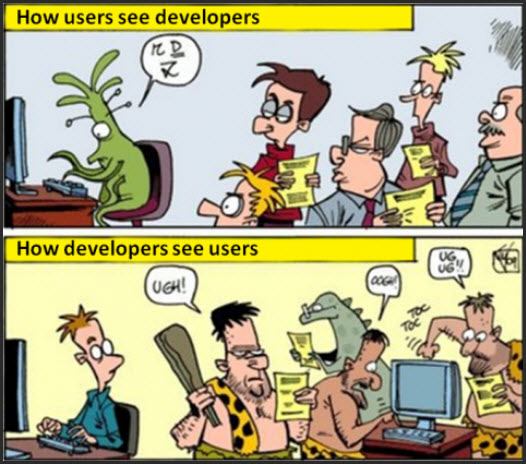
Let me start by clarifying what I mean when I use the term hacker. I’m not using it in its more popular colloquial form, which means “someone who gains unauthorized access to computer systems”. Instead, I’m using the classic meaning, as stated in the Jargon File:
A person who enjoys exploring the details of programmable systems and how to stretch their capabilities, as opposed to most users, who prefer to learn only the minimum necessary. RFC1392, the Internet Users’ Glossary, usefully amplifies this as: A person who delights in having an intimate understanding of the internal workings of a system, computers and computer networks in particular.
The last part so important that it bears repeating: A person who delights in having an intimate understanding of the internal workings of a system…
This is the key distinction between developers and other end users. Most end users simply want tools that “just work”. On the other hand, developers want tools that do more than “just work” — they want tools that they can dive into, explore, experiment with, and use to create new applications (and even new tools).
Products geared towards developers need to accommodate this mindset. Where most end users will skip the documentation and even a “quick start” guide, developer products need to have strong support and almost excessive documentation, which may include:
- A “quick start” guide so that they can experience the rush of early wins — I call this “helping developers go from zero to awesome in 60 minutes”
- Clear documentation with examples where applicable
- Sample applications that they can run, reverse engineer, and modify
- Examples of successful uses of the product
- A healthy support system and community that they can turn to for assistance and inspiration
They are tools used in conjunction with other tools
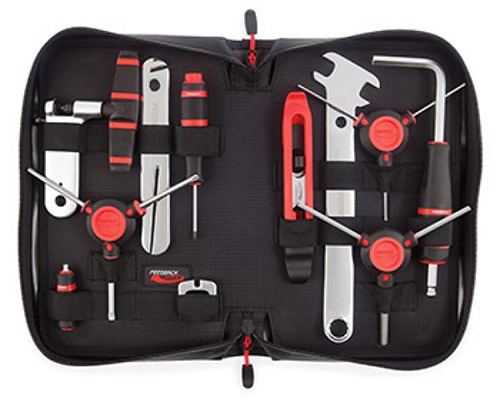
The combination of Moore’s Law, nearly ubiquitous computing, and growing user expectations means that software is becoming increasingly complex. It’s very rare to see anything built using a single tool and using only a single API. These days, no software project is written in a vacuum, but by linking together disparate pieces using a wide selection of tools created by different organizations and developers and somehow get them to work as a cohesive whole.
Products geared towards developers need to support this heterogeneity and reduce the confusion that comes with it. APIs need to support de jure and de facto standards and be designed with the Principle of Least Astonishment in mind. APIs and tools need to be designed to communicate using standard, and if possible, human-readable, interfaces. Vendors need to keep abreast of the changing fashions and trends in software development and constantly update their offerings to match. Where possible, the developer product documentation should provide examples of interactions with other APIs and tools.
“The street finds its own uses for things.”
“The street finds its own uses for things” is a line used by Automatic Jack, the narrator of William Gibson’s seminal cyberpunk short story Burning Chrome. He was using it to refer to how people in the dystopian future world of the story used drugs for things other than their intended purposes, but it’s also an apt description for how developers use tools in unexpected ways more often than regular end users do.
A classic example of the street finding its own uses for things is XMLHttpRequest, which Microsoft originally developed for the sole purpose of making Outlook Web Access behave more like its desktop counterpart. Developers discovered that it could be used for making asynchronous requests in their web applications, and the Ajax revolution was born.
(For a supremely geeky variant of the street finding its own uses for things, you may want to look at a C programming trick called Duff’s Device, which speeds up time-critical loops by eschewing standard loops structures and making unorthodox use of a switch statement.)
Products geared towards developers need to take this tendency into account. This can be done by embracing a number of design philosophies including:
- The Unix tool philosophy, in which you provide a set of tools, each of which does a single thing, and does it very, very well.
- Postel’s Principle: Be flexible with the input that you accept, but be strict with the output that you produce (named after Jon Postel, this appears in one of his early specs for TCP).
- The team player approach: Build developer products with the expectation that they will be used as a cog in a system or part of a collection of tools, and will need to interface with other tools, systems, and applications.
They are a means to an end

Products geared towards developers are meta-applications: applications that help them create applications. Application building is a time-consuming, brainpower-intensive, frustrating, complex, and confusing exercise, so products meant to be used in the process must:
- Work reliably
- Work predictably
- Reduce cognitive load
- Integrate with other systems
- Be flexible enough to be used in cases that no one has considered yet
- Scale
Most exciting
Here are the five things from [a list provided on the application form] (plus one or two items of my own) that excite me the most:
- Own the developer platform strategy
- Own technical context about how to develop apps on the [Company X] Platform
- Talk to developers *and* listen to them, identify the 20% whose projects make the heaviest use of the [Company X] platform or are the most dependent on it, and bring observations, data, and feedback to the [Company X] product team
- Learn a new skill to fill in a gap on your team
- Do remote or in-person user testing for new developer features
Least exciting
Here are the five things from [a list provided on the application form] that excite me the least:
- Set and communicate a project timeline with your team (but hey, it’s gotta be done)
- Manage your team’s tasks on a weekly basis (again, gotta be done)
- Commit HTML or JS code directly to our main repo
- Ship good looking CSS directly to our main repo
- Do support at [Company X]
And finally…
Congratulations on making it this far. I’d like to close with this video by New Relic, who make a software performance monitoring system. It features some of the software world’s brightest lights: Matz, Guido, Linus, DHH, Bill Joy, James Gosling, Sir Tim, Marc, Woz, Rasmus, The Gu, Sergey, Dries and finally Zuck. But guess whose picture they close with at the 1:04 mark!
I have no relationship with New Relic — they somehow found that picture of me online and thought it captured the kind of developer that they wanted to feature.
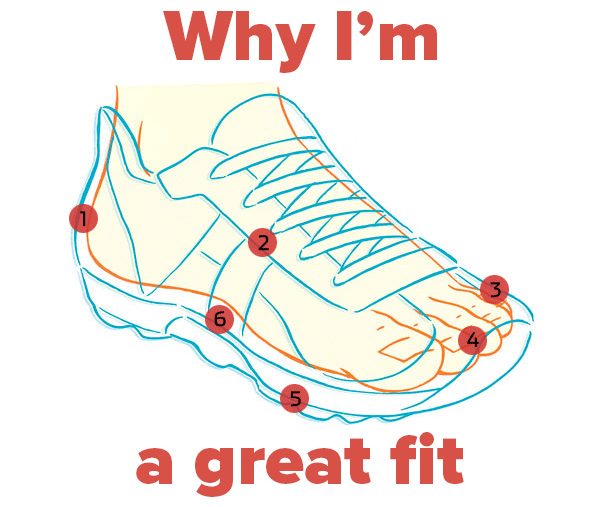
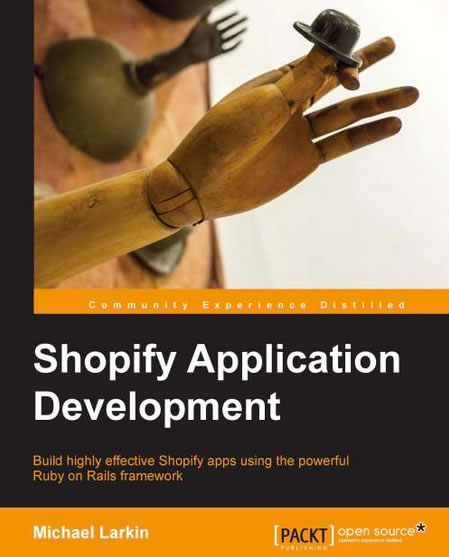
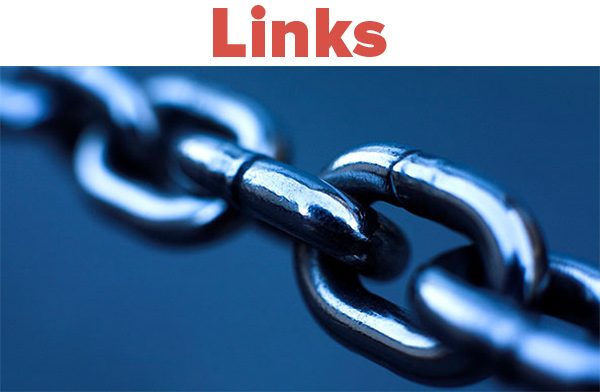
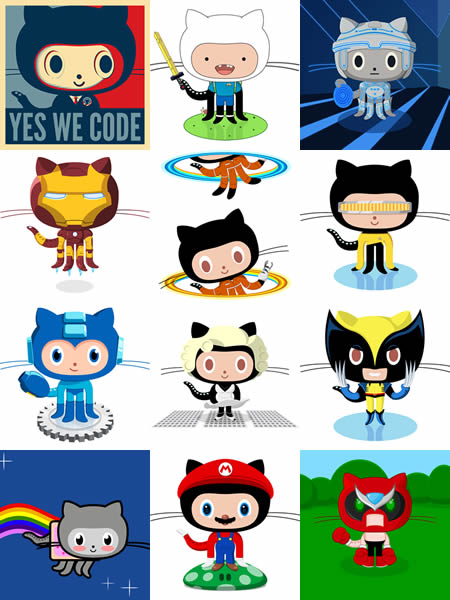


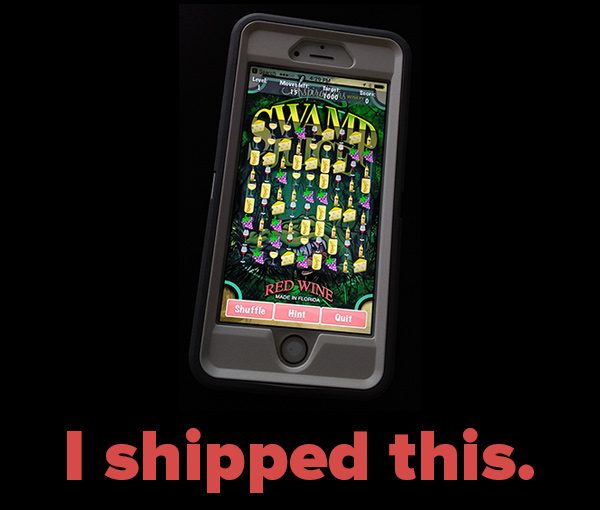

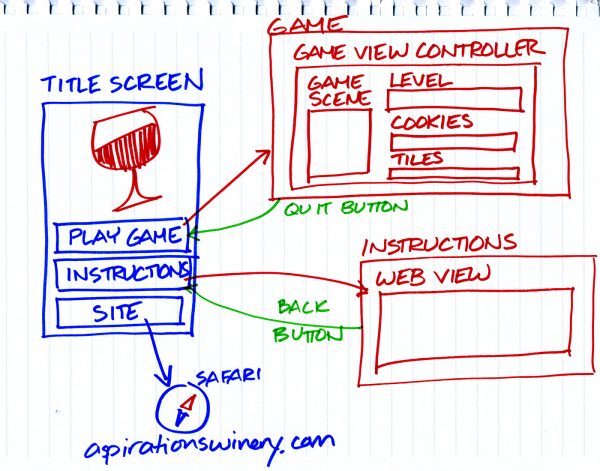

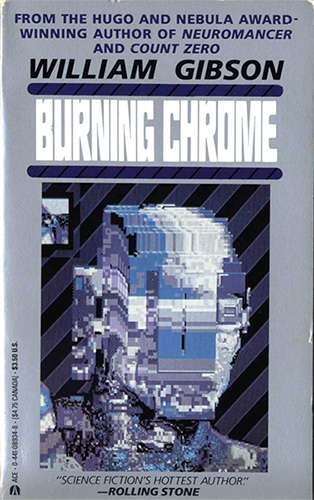
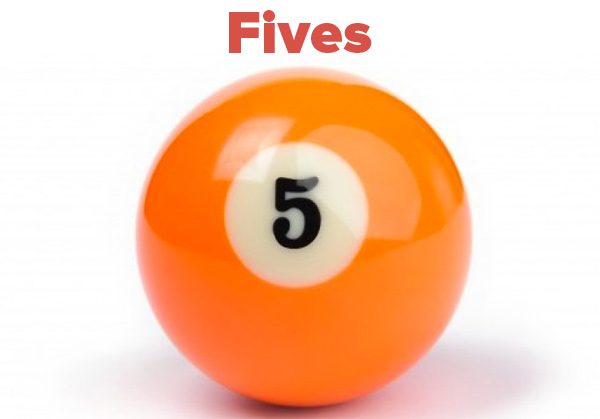
13 replies on “My magnum opus job application”
Wow! You’re awesome, Joey!
This is incredible. You are as you know, one of a kind. They should be knocking down your door to get you. Good luck (not that you need it)!
Wow. Cart wait to hear what happens next.
[…] See my magnum opus job application […]
[…] See my magnum opus job application […]
[…] searching and networking, and have taken some less typical approaches such as publicizing my magnum opus job application (which was actually an application to a prospective employer, with information about that prospect […]
[…] original version of my magnum opus job application, which was for a particular job at a particular company, failed in two […]
[…] another interesting tidbit from my Magnum Opus Job Application that you might have […]
[…] See my magnum opus job application […]
[…] See my magnum opus job application […]
[…] See my magnum opus job application […]
[…] See my magnum opus job application […]
[…] See my magnum opus job application […]